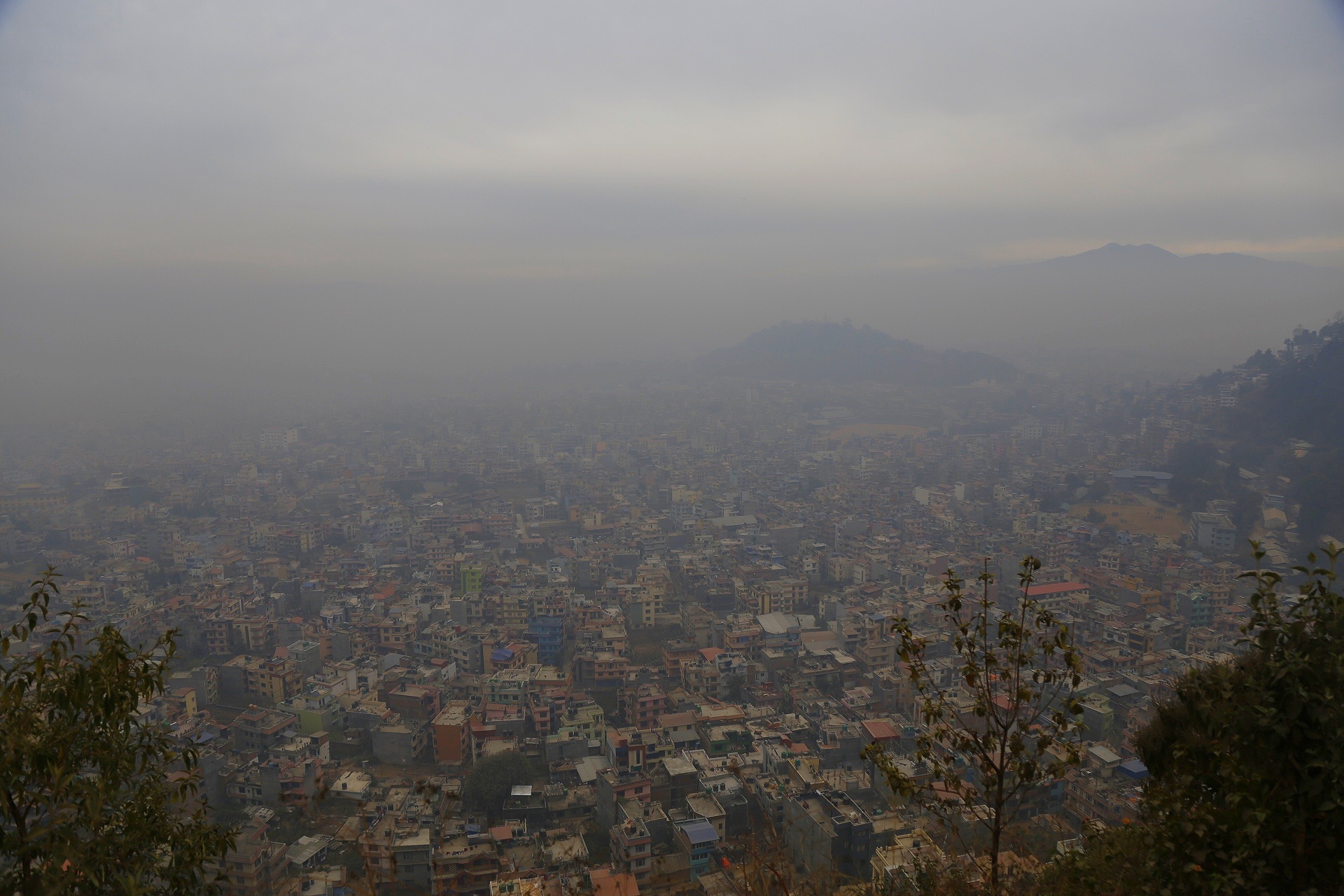Indoor Air Quality Alert: Nepal Monsoon Flooding – IQAir

Report on Monsoon Flooding in Nepal: Impacts on Sustainable Development Goals
1.0 Event Overview and Geographical Impact
Beginning on October 3, 2025, sustained monsoon rainfall has resulted in severe flooding and landslides across Nepal. This extreme weather event, indicative of challenges addressed by SDG 13 (Climate Action), has caused rivers to overflow and has severely damaged critical infrastructure, compromising the resilience targeted by SDG 11 (Sustainable Cities and Communities).
The geographical impact is widespread, with the eastern district of Ilam experiencing the most severe consequences. Significant flooding has also been reported in the Jhapa and Sunsari districts. In the Central Region, the Bagmati and Koshi rivers have exceeded their danger levels, leading to the inundation of settlements in Kathmandu and forcing authorities to open all 56 sluice gates of the Koshi Barrage to mitigate further damage.
2.0 Humanitarian and Infrastructure Status
The ongoing rainfall presents significant challenges to containment and rescue efforts. The humanitarian toll directly contravenes the objectives of SDG 3 (Good Health and Well-being), with official reports confirming at least 47 fatalities, five missing persons, and 20 injuries. The displacement of communities and destruction of property threaten to exacerbate poverty, undermining progress toward SDG 1 (No Poverty).
Damage to infrastructure has been extensive. The blockage of multiple highways and rural roads has isolated numerous districts and stranded hundreds of individuals, disrupting economic activity and access to essential services. This highlights a critical failure in developing the resilient infrastructure central to SDG 11. Domestic flight services have also been disrupted. Rescue operations are underway in over 28 locations, led by the Nepalese army and emergency services utilizing helicopters and motorboats.
3.0 Official Response and Public Advisories
In response to the crisis, government authorities have issued flood and landslide alerts for eastern and central Nepal. A three-day restriction on vehicular movement in the Kathmandu Valley was implemented to ensure public safety. These measures represent critical state-level actions to safeguard lives and support the principles of SDG 3 and SDG 11.
Evacuation orders have been issued for residents in high-risk areas, particularly those near riverbanks and on unstable slopes in Ilam and adjacent districts. Security forces are actively assisting in relocating stranded persons to safer locations, and a network of emergency shelters has been established to provide temporary housing for displaced populations.
4.0 Public Health and Safety Recommendations Post-Flooding
In the aftermath of flooding, mitigating secondary health risks is essential for upholding SDG 3 (Good Health and Well-being). The restoration of safe living conditions, a key target of SDG 11, requires diligent efforts to prevent mold contamination, which can cause significant respiratory and other health issues. Residents returning to flood-affected properties are advised to adhere to the following safety protocols:
- Ensure Structural and Electrical Safety: Before re-entering a property, confirm it is structurally sound and free from electrical hazards.
- Use Personal Protective Equipment (PPE): Wear gloves, goggles, and a KN95/FFP2 mask to prevent exposure to mold spores and other contaminants.
- Remove Standing Water: Extract all standing water immediately using pumps, wet-dry vacuums, or other means.
- Promote Drying and Ventilation: Open all windows and doors and use fans and dehumidifiers to dry the affected area within 24-48 hours to inhibit mold growth.
- Dispose of Contaminated Porous Materials: Discard items that cannot be thoroughly cleaned and dried, such as carpets, mattresses, and upholstered furniture.
- Clean and Disinfect Hard Surfaces: Clean all nonporous surfaces with a suitable detergent. Disinfect with a solution of 1.5 cups of bleach per gallon of water, ensuring not to mix bleach with ammonia-based cleaners.
- Control Indoor Humidity: Maintain indoor relative humidity levels between 35-50% using dehumidifiers to create an environment inhospitable to mold.
- Utilize Air Purification: Operate a high-performance air purifier designed for mold remediation during and after the cleanup process.
- Seek Professional Assistance: For extensive water and mold damage, engage professional mold remediation services to ensure a safe and thorough restoration of the living space.
Prompt and thorough adherence to these measures is critical for protecting public health. Individuals experiencing persistent health issues following exposure should consult a medical professional.
1. Which SDGs are addressed or connected to the issues highlighted in the article?
-
SDG 3: Good Health and Well-being
The article directly connects to this goal by reporting on the human cost of the disaster, including 47 deaths, 20 injuries, and five missing persons. Furthermore, it provides detailed public health advice on how to prevent mold after flooding, which can cause significant health risks. This focus on preventing illness and addressing the immediate health impacts of a natural disaster aligns with ensuring healthy lives and promoting well-being.
-
SDG 11: Sustainable Cities and Communities
This goal is central to the article’s content. The flooding has inundated settlements, blocked highways, and isolated districts, directly impacting the safety and resilience of communities in Nepal. The mention of evacuation orders, the establishment of emergency shelters, and rescue operations highlights the challenges and responses related to making human settlements safe and resilient in the face of natural disasters.
-
SDG 13: Climate Action
The article attributes the flooding and landslides to “days of heavy monsoon rain,” a climate-related phenomenon. The event underscores the urgent need to strengthen resilience and adaptive capacity to climate-related hazards and natural disasters. The government’s response, including issuing alerts and conducting large-scale rescue operations, is a direct action to combat the impacts of such climate-related events.
2. What specific targets under those SDGs can be identified based on the article’s content?
-
Target 3.d: Strengthen the capacity of all countries, in particular developing countries, for early warning, risk reduction and management of national and global health risks.
This target is relevant because the article mentions that authorities have issued “flood and landslide alerts” across eastern and central Nepal. Additionally, the detailed section on preventing mold after a flood serves as a public health guide for risk reduction, aiming to manage the health risks associated with the disaster’s aftermath.
-
Target 11.5: By 2030, significantly reduce the number of deaths and the number of people affected and substantially decrease the direct economic losses relative to global gross domestic product caused by disasters, including water-related disasters, with a focus on protecting the poor and people in vulnerable situations.
The article’s core focus is on the impact of a water-related disaster. It explicitly quantifies the number of people killed (47), missing (5), and injured (20). The description of inundated settlements, blocked highways, and stranded individuals points to the significant number of people affected by the flooding, directly relating to the aim of this target.
-
Target 13.1: Strengthen resilience and adaptive capacity to climate-related hazards and natural disasters in all countries.
The entire event described—widespread flooding and landslides caused by heavy monsoon rains—is a climate-related natural disaster. The response efforts, including rescue operations by the army, evacuation orders, and the management of the Koshi Barrage, are all measures related to a country’s capacity to adapt and respond to such hazards.
3. Are there any indicators mentioned or implied in the article that can be used to measure progress towards the identified targets?
-
Indicator 11.5.1 / 13.1.1: Number of deaths, missing persons and directly affected persons attributed to disasters per 100,000 population.
The article provides direct data points for this indicator. It explicitly states that “at least 47 people have been killed, with five missing and 20 injured.” This quantitative data can be used to measure the human impact of the disaster, which is the core of this indicator.
-
Indicator 3.d.1: International Health Regulations (IHR) capacity and health emergency preparedness.
This indicator is implied through the actions described in the article. The issuance of “flood and landslide alerts” and the provision of specific public health guidance on “how to protect myself from mold after flooding” demonstrate a level of national capacity for health emergency preparedness and risk communication, which this indicator aims to measure.
4. Table of SDGs, Targets, and Indicators
| SDGs | Targets | Indicators |
|---|---|---|
| SDG 3: Good Health and Well-being | 3.d: Strengthen the capacity of all countries… for early warning, risk reduction and management of national and global health risks. | 3.d.1 (Implied): The issuance of alerts and public health advice on mold prevention implies a system for health emergency preparedness. |
| SDG 11: Sustainable Cities and Communities | 11.5: By 2030, significantly reduce the number of deaths and the number of people affected… caused by disasters. | 11.5.1 (Mentioned): The article provides specific numbers of deaths (47), missing persons (5), and injured individuals (20). |
| SDG 13: Climate Action | 13.1: Strengthen resilience and adaptive capacity to climate-related hazards and natural disasters in all countries. | 13.1.1 (Mentioned): The number of deaths, missing persons, and affected individuals due to a climate-related disaster (flooding from monsoon rains) is explicitly stated. |
Source: iqair.com

What is Your Reaction?
 Like
0
Like
0
 Dislike
0
Dislike
0
 Love
0
Love
0
 Funny
0
Funny
0
 Angry
0
Angry
0
 Sad
0
Sad
0
 Wow
0
Wow
0



















































.jpg.webp?itok=0ZsAnae9#)

























